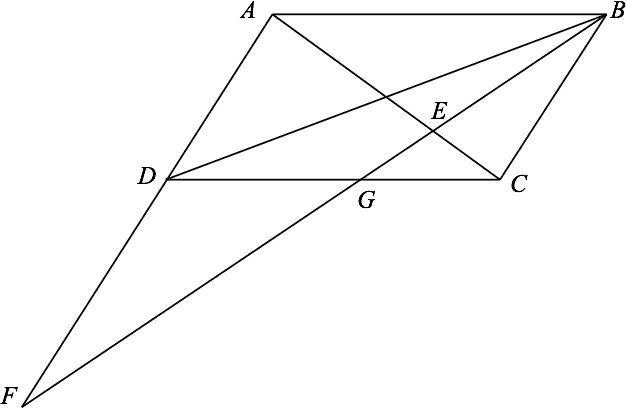Given parallelogram ABCD with its diagonals drawn. A line through B intersects AC at E, DC at G, and line AD extended at F. Observe that triangle AEF is similar to triangle CEB and show that EB is the geometric mean of EG and EF. Interested? See how this looks in a drawing.
Solution
We want , i.e. , i.e..
We tease out some similar triangles to make this happen. There are many congruent angles to work with. Find them and use them!
First, , so .
Then, , so .
So , and there we are.
Hmm, what if ?
